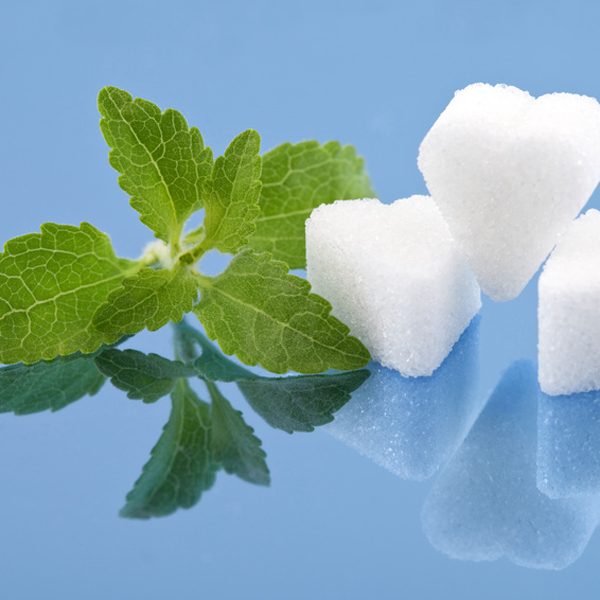Why Stevia is not only sweet but bitter:
Bitter taste receptors for Stevia sweeteners discovered

The human tongue has just one receptor type for detecting sweetness but about25 different ones for bitter flavors. Scientists at Technische Universitaet Muenchen (TUM) and the German Institute of Human Nutrition Potsdam-Rehbruecke (DIfE) have now identified the two receptors, hTAS2R4 and hTAS2R14, that detect the bitter after taste of Stevia.
Extracts from the subtropical plants are up to 300 times sweeter than conventional sugar. They also contain almost no calories and are less harmful to teeth. Yet Stevia, or sweet leaf, as it is more commonly known, also has its disadvantages: At high concentrations, it elicits licorice-like aromas and a bitter after taste.
The scientists investigated nine Steviol glycosides responsible for the intensive sweet taste of Stevia plant extracts. They initially tested the bitterness or sweetness that each glycoside evokes in vitro, using cells that act as taste receptor cells and react to the glycoside molecules like an artificial tongue. The researchers were thus able to identify the receptors that are activated by Stevia.
They also tested the taste intensity of different concentrations of Stevia components with trained volunteers. The results of those sensory tests combined with the initial cell experiments revealed that the structure of glycoside molecules plays a key role in determining sweetness or bitterness in Stevia. “If a molecule has more glucose molecules attached to it, it is sweeter and less bitter,” explains Prof. Thomas Hofmann, Chair of Food Chemistry and Molecular Sensory Science at TUM. The Steviol glycoside rebaudioside D, for example, comprises five glucose molecules and is around five times sweeter and two-thirds less bitter than dulcoside A, which has just two glucose molecules.
“Steviol glycosides activate two bitter receptors on the human tongue, and this elicits a bitter after taste in the mouth,” confirms Anne Brockhoff at the German Institute of Human Nutrition. These new findings could help minimize the bitter taste of Stevia products at an early stage in production processes. ”They could open the way for selective cultivation measures or targeted purification during the development of Stevia products, enabling manufacturers to focus on the sweetest candidates,” confirms TUM scientist Thomas Hofmann.
Publication:
Caroline Hellfritsch, Anne Brockhoff, Frauke Stähler, Wolfgang Meyerhof, Thomas Hofmann: Human Psychometric and Taste Receptor Responses to Steviol Glycosides, Journal of Agricultural and Food Chemistry, May 2012
http://pubs.acs.org/doi/abs/10.1021/jf301297n
Contact:
Technische Universitaet Muenchen
Chair of Food Chemistry and Molecular Sensory Science
Prof. Thomas Hofmann
Phone: +49(0)8161 71 2902 / 5403
E-mail: thomas.hofmann[at]wzw.tum.de
http://www.molekulare-sensorik.de
German Institute of Human Nutrition Potsdam-Rehbrücke (DIfE)
Department of Molecular Genetics
Dr. Anne Brockhoff
Phone: +49(0)33200 88 2669
E-mail: brockhoff[at]dife.de
http://www.dife.de/en/index.php
Technical University of Munich
Corporate Communications Center